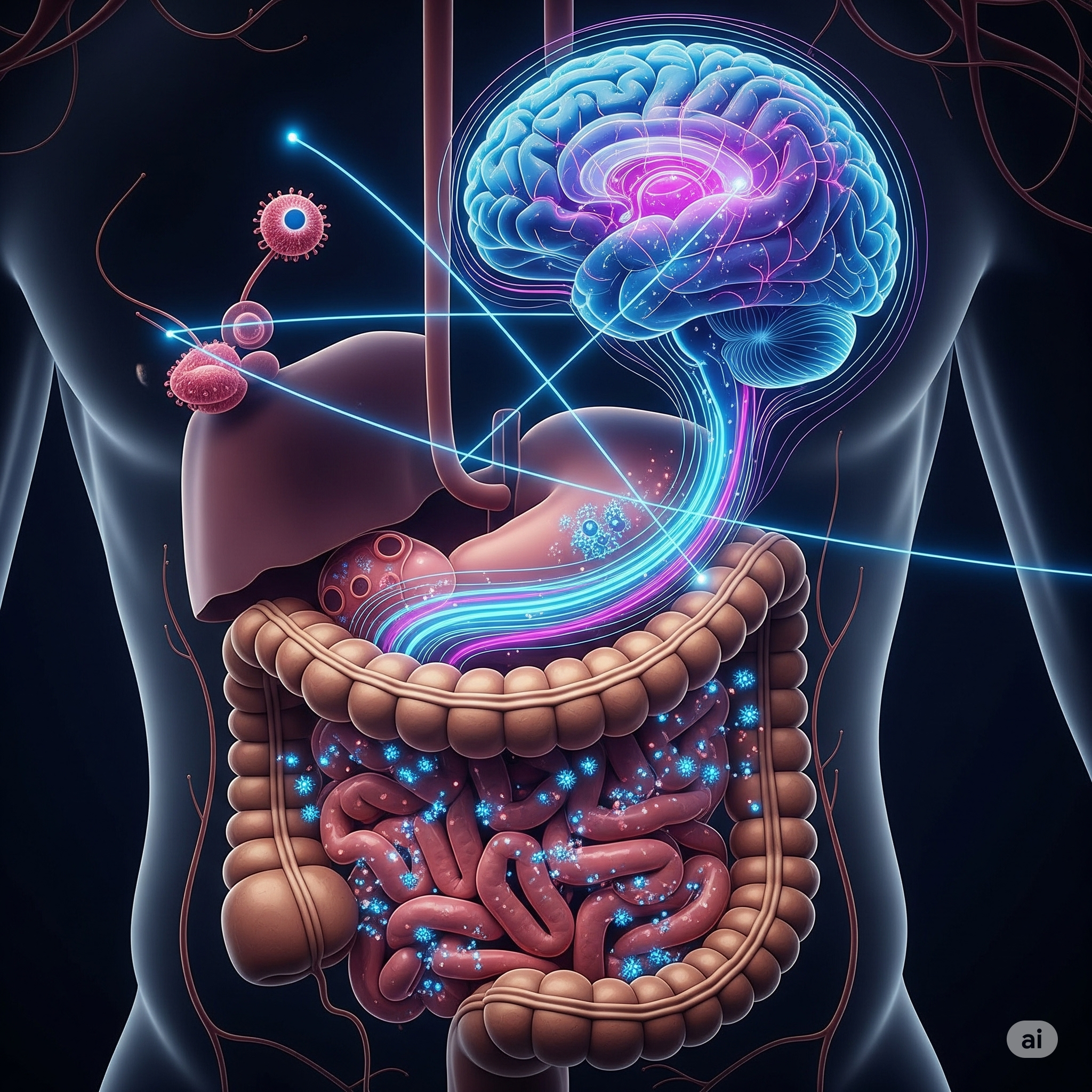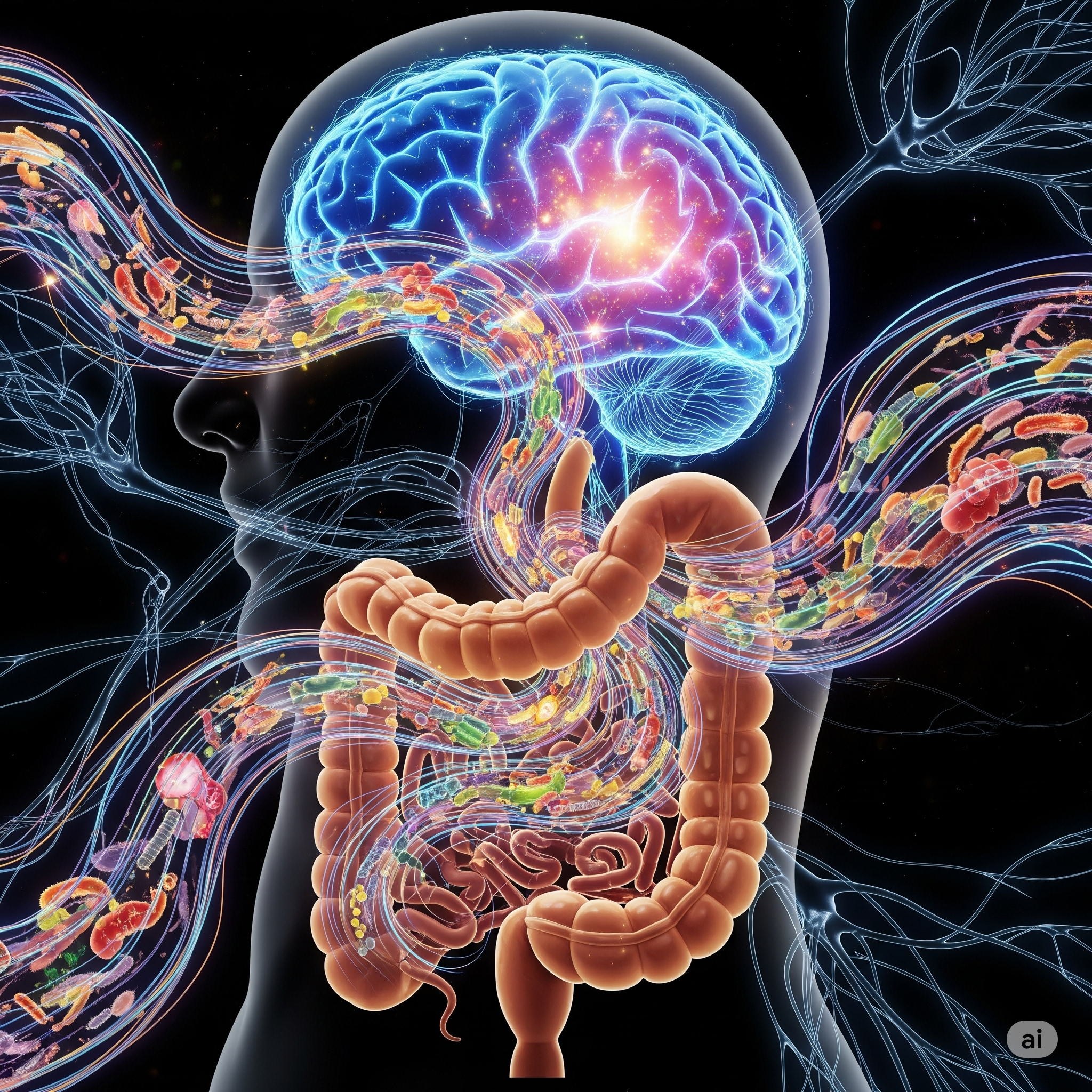Introduction: More Than Just a Food Processor – The Gut’s Hidden Depths
For centuries, the gastrointestinal system (GIS), commonly known as the gut, was primarily perceived as a straightforward plumbing system responsible for one crucial task: digesting food and absorbing nutrients. While this function is undeniably vital, modern scientific advancements have unveiled a far more intricate and dynamic picture. The gut is now recognized as a complex ecosystem, a “second brain,” and a central hub for our immune system, profoundly influencing not just our physical health but also our mental well-being. From its vast network of neurons to its teeming microbial inhabitants, the GIS is undergoing a “silent revolution” in our understanding, revealing its pivotal role far beyond simple digestion. This article will delve into the multifaceted anatomy and physiology of the gastrointestinal system, explore its groundbreaking connections to immunity and the brain, discuss common disorders, and highlight emerging research that promises to unlock new frontiers in holistic health.
Anatomy and Physiology: The Elaborate Journey of Digestion
The gastrointestinal system is an elaborate tube, approximately nine meters long in adults, extending from the mouth to the anus. It’s a marvel of biological engineering designed for the mechanical and chemical breakdown of food, absorption of nutrients, and elimination of waste.
Key organs of the GIS include:
- Mouth and Pharynx: The starting point, where mechanical digestion (chewing) and initial chemical digestion (saliva enzymes) begin.
- Esophagus: A muscular tube that propels food from the pharynx to the stomach via peristalsis.
- Stomach: A muscular sac that churns food and secretes gastric acids and enzymes for protein digestion, forming chyme.
- Small Intestine: The primary site for nutrient absorption. It’s divided into the duodenum, jejunum, and ileum, and its inner surface is lined with villi and microvilli, vastly increasing its absorptive area. Here, carbohydrates, fats, and proteins are broken down further by enzymes from the pancreas and bile from the liver/gallbladder.
- Large Intestine (Colon): Primarily responsible for absorbing water and electrolytes, and forming stool. It houses a vast population of microbes.
- Rectum and Anus: The terminal end for waste elimination.
Accessory Organs: The liver, gallbladder, and pancreas play crucial roles by producing digestive enzymes, bile, and hormones that aid digestion but food does not directly pass through them.
The entire process is meticulously regulated by a complex interplay of hormones, enzymes, and the enteric nervous system (ENS) – often called the “second brain” – which is an extensive network of neurons embedded in the gut wall, capable of operating independently from the central nervous system (CNS) but constantly communicating with it.
The Microbiome: A Universe Within – Gut Bacteria and Their Profound Influence
Perhaps the most significant revelation about the gastrointestinal system in recent decades is the critical role of the gut microbiome. This refers to the trillions of microorganisms – bacteria, viruses, fungi, and archaea – that inhabit our intestines. Far from being passive residents, these microbes form a dynamic ecosystem that profoundly influences virtually every aspect of our health.
A healthy, diverse gut microbiome is associated with:
- Nutrient Synthesis: Producing essential vitamins (e.g., K and some B vitamins) and breaking down complex carbohydrates that human enzymes cannot digest.
- Short-Chain Fatty Acids (SCFAs): Fermenting dietary fiber to produce SCFAs like butyrate, propionate, and acetate. Butyrate is a primary energy source for colon cells and has significant anti-inflammatory properties, benefiting both gut and overall health.
- Immune System Modulation: The gut houses about 70% of the body’s immune cells. The microbiome “educates” and fine-tunes the immune system, helping it distinguish between harmful pathogens and beneficial substances.
- Protection Against Pathogens: A healthy microbial community creates “colonization resistance,” preventing harmful bacteria from establishing themselves.
- Metabolism and Weight Regulation: Influencing how food is metabolized, nutrient absorption, and even fat storage.
Dysbiosis, an imbalance in the gut microbiota (too many bad bacteria, not enough good ones, or reduced diversity), has been linked to a surprising array of health issues, extending far beyond digestive discomfort.
The Gut-Brain Axis: The Enigmatic Connection Between Gut and Mind
The concept of the gut-brain axis (GBA) has revolutionized our understanding of the interconnectedness between the gastrointestinal system and the central nervous system. This bidirectional communication highway involves several pathways:
- The Vagus Nerve: This cranial nerve acts as a direct communication line, sending signals from the gut to the brain and vice versa. It’s crucial for regulating digestion, mood, and stress responses.
- Neurotransmitters: The gut produces and responds to many of the same neurotransmitters found in the brain. For instance, over 90% of the body’s serotonin (a key mood regulator) is produced in the gut. Dopamine, GABA, and other neuroactive compounds are also synthesized by gut cells or influenced by the microbiome.
- Immune System: A compromised gut barrier (“leaky gut”) can lead to increased inflammation. Inflammatory molecules can cross into the bloodstream and potentially reach the brain, contributing to neuroinflammation, which is implicated in various neurological and psychiatric conditions.
- Microbial Metabolites: The gut microbiota produces various metabolites (like SCFAs, tryptophan metabolites) that can directly influence brain function, neurotransmitter production, and even the integrity of the blood-brain barrier.
This profound connection means that disruptions in gut health can significantly impact mental health. Research is actively exploring the GBA’s role in conditions like:
- Depression and Anxiety: Altered gut microbiomes are frequently observed in individuals with mood disorders, and some probiotic strains show “psychobiotic” effects, improving mood and reducing anxiety.
- Stress Response: Chronic stress can negatively impact gut barrier integrity and alter microbial composition, creating a vicious cycle that exacerbates mental health issues.
- Autism Spectrum Disorder (ASD): Growing evidence suggests a link between gut dysbiosis and ASD symptoms, with many children with ASD exhibiting distinct microbial profiles and GI issues.
- Neurodegenerative Diseases: Emerging research points to the GBA’s involvement in Parkinson’s disease (where alpha-synuclein aggregates may originate in the gut) and Alzheimer’s disease (through neuroinflammation and microbial metabolites).
The Gut and Immunity: A Powerful Alliance
As mentioned, a staggering 70% of the body’s immune cells reside in the gut-associated lymphoid tissue (GALT), making the gastrointestinal system a cornerstone of our immune defense. The constant interaction between the gut lining, the microbiome, and immune cells trains and modulates the immune system.
- Barrier Function: The intestinal lining forms a tight barrier that selectively allows nutrients to pass while preventing harmful toxins, undigested food particles, and pathogens from entering the bloodstream. When this barrier is compromised (often called “leaky gut” or increased intestinal permeability), it can trigger systemic inflammation and immune responses.
- Immune Tolerance: The gut teaches the immune system to tolerate beneficial microbes and harmless food antigens while mounting responses against actual threats. A breakdown in this tolerance can contribute to autoimmune conditions.
- Role in Autoimmune Diseases: Dysbiosis and a compromised gut barrier are increasingly implicated in the development and progression of various autoimmune diseases, including Crohn’s disease, ulcerative colitis, rheumatoid arthritis, and even type 1 diabetes.
Understanding this intricate interplay highlights why maintaining gut health is paramount for a robust and balanced immune system.
Common Gastrointestinal Disorders and Their Broader Implications
Dysfunctions within the gastrointestinal system can manifest in a wide range of common and often debilitating conditions, many of which are now understood to have connections far beyond the gut itself.
- Irritable Bowel Syndrome (IBS): A common functional disorder characterized by abdominal pain, bloating, constipation, or diarrhea, often linked to gut dysbiosis, altered gut motility, and increased gut sensitivity. The gut-brain axis plays a significant role in IBS symptoms.
- Inflammatory Bowel Disease (IBD): Chronic inflammatory conditions like Crohn’s disease and ulcerative colitis. While genetic predisposition plays a role, environmental factors, gut microbiome imbalances, and immune dysregulation within the gut are key contributors.
- Celiac Disease: An autoimmune disorder where consuming gluten leads to damage in the small intestine. It’s a classic example of an immune response triggered by a dietary protein in genetically predisposed individuals.
- Gastroesophageal Reflux Disease (GERD): Characterized by stomach acid flowing back into the esophagus, causing heartburn. While often mechanical, diet and lifestyle play crucial roles.
- Dyspepsia (Indigestion): A common complaint involving upper abdominal discomfort, bloating, or nausea.
- Constipation and Diarrhea: Common symptoms that can indicate various underlying issues, including dietary habits, stress, infections, or underlying gut dysbiosis.
Many of these conditions are now being viewed not just as isolated gut problems but as systemic issues with strong links to diet, stress, lifestyle, and the intricate balance of the gut microbiome.
Nurturing Your Gut: Dietary and Lifestyle Strategies for Optimal GIS Health
Given the gastrointestinal system’s far-reaching influence, proactive strategies to maintain its health are paramount for overall well-being.
- Fiber-Rich Diet: Consuming a diverse range of plant-based foods (fruits, vegetables, whole grains, legumes, nuts, seeds) provides essential dietary fiber, which acts as a prebiotic, feeding beneficial gut bacteria and promoting SCFA production.
- Fermented Foods: Including fermented foods like yogurt, kefir, sauerkraut, kimchi, and kombucha can introduce beneficial live microorganisms (probiotics) into the gut.
- Limit Processed Foods and Sugar: These can negatively impact gut microbial diversity and contribute to inflammation.
- Hydration: Adequate water intake is crucial for healthy digestion and stool consistency.
- Stress Management: Chronic stress directly impacts the gut-brain axis, potentially altering gut motility, increasing gut permeability, and shifting microbial composition. Practices like meditation, yoga, mindfulness, and regular exercise can mitigate this.
- Regular Exercise: Physical activity has been shown to positively influence gut microbial diversity and composition.
- Adequate Sleep: Poor sleep can disrupt gut flora and impact the gut-brain axis.
- Mindful Eating: Eating slowly, chewing food thoroughly, and paying attention to hunger and fullness cues can improve digestion.
- Judicious Use of Antibiotics: While essential for bacterial infections, antibiotics can significantly disrupt the gut microbiome. Use them only when necessary and consider probiotic supplementation.
- Probiotic and Prebiotic Supplements: While whole foods are ideal, targeted probiotic and prebiotic supplements can be beneficial in certain circumstances, but always consult a healthcare professional.
Emerging Research and Future Directions: The Gut’s Unfolding Potential
The field of gastrointestinal health is one of the most dynamic areas of medical research. Future directions are poised to unlock even more profound insights:
- Personalized Nutrition: Understanding how an individual’s unique gut microbiome responds to specific foods will lead to highly personalized dietary recommendations for optimal health.
- Fecal Microbiota Transplantation (FMT): While currently approved mainly for recurrent Clostridioides difficileinfections, research is exploring FMT’s potential for IBD, metabolic syndrome, and even neurological disorders, highlighting the power of a healthy microbiome.
- Next-Generation Psychobiotics: Developing highly specific probiotic strains or microbial metabolites designed to target the gut-brain axis for mental health conditions.
- Targeting the Gut Barrier: New therapies aimed at strengthening the intestinal barrier to reduce “leaky gut” and associated systemic inflammation.
- Role in Chronic Diseases: Further elucidation of the gut’s role in conditions like diabetes, obesity, cardiovascular disease, and autoimmune disorders will open doors for novel preventative and therapeutic strategies.
- AI and Big Data in Gut Health: Leveraging artificial intelligence and large datasets to analyze complex microbiome profiles and predict disease risks or treatment responses.
The “silent revolution” in our understanding of the gastrointestinal system is just beginning, promising a future where gut health is central to holistic disease prevention and treatment.
Conclusion: The Gut – A Pillar of Holistic Health
The journey through the gastrointestinal system reveals it to be far more than just a digestive tube. It is a highly sophisticated organ system, intricately connected to our immune system, deeply influencing our brain and mental health, and housing a thriving microbial universe that dictates much of our overall well-being. From its complex anatomy and physiology to the profound impacts of its microbial residents and the bidirectional communication of the gut-brain axis, the GIS is a true pillar of holistic health.
As scientific research continues to unravel its mysteries, our appreciation for the gut’s silent revolution will only grow. Nurturing this remarkable system through mindful dietary choices, effective stress management, and a healthy lifestyle is not merely about avoiding digestive discomfort; it is a fundamental investment in our physical vitality, mental clarity, and long-term health. The future of medicine increasingly recognizes the gut as a central player, offering exciting new avenues for diagnosis, prevention, and treatment across a spectrum of human conditions.


